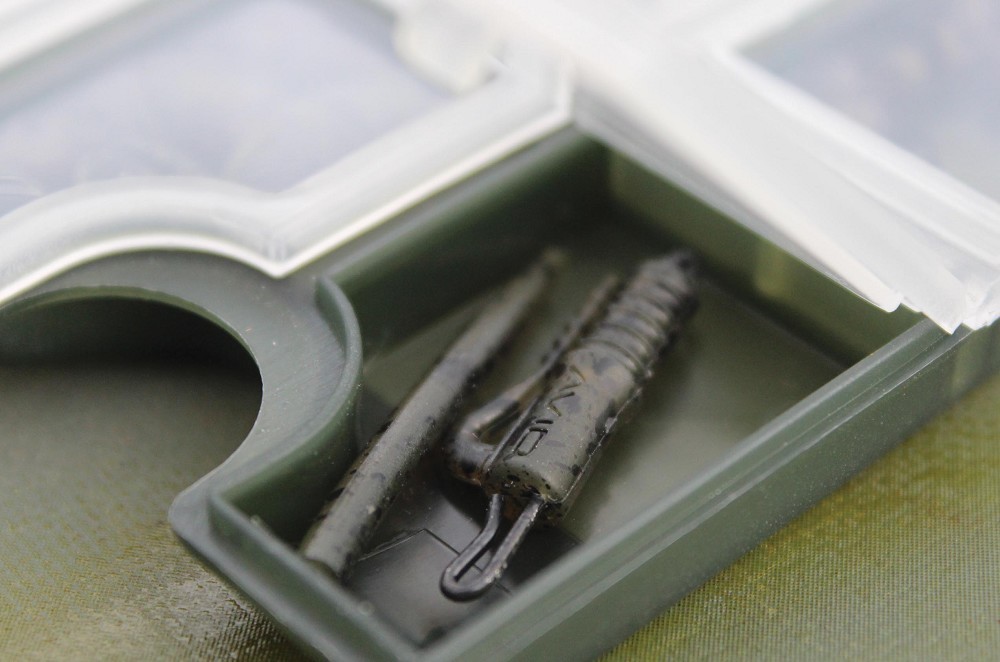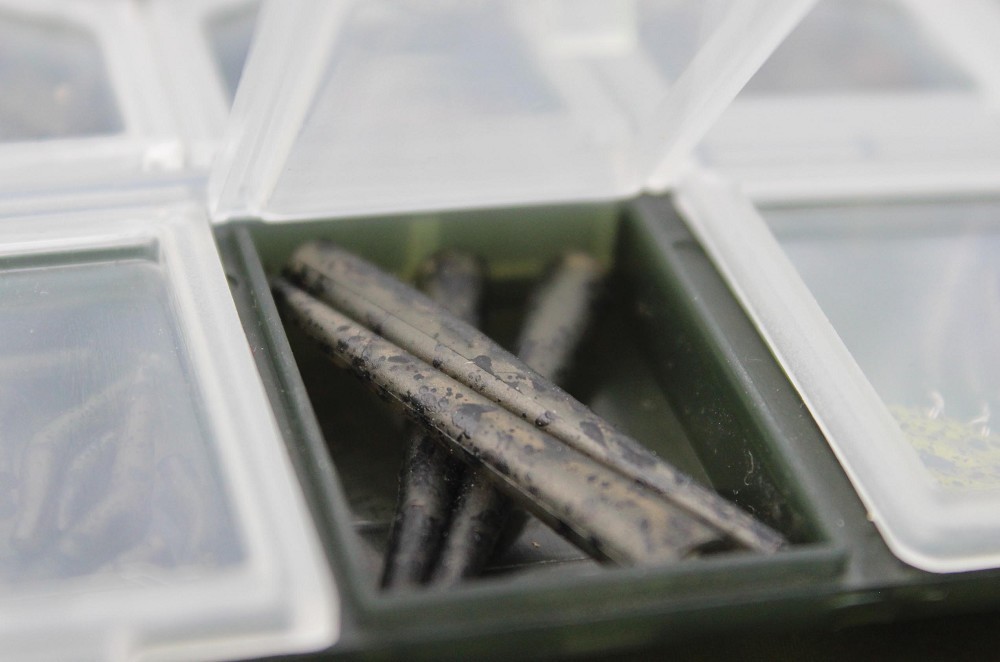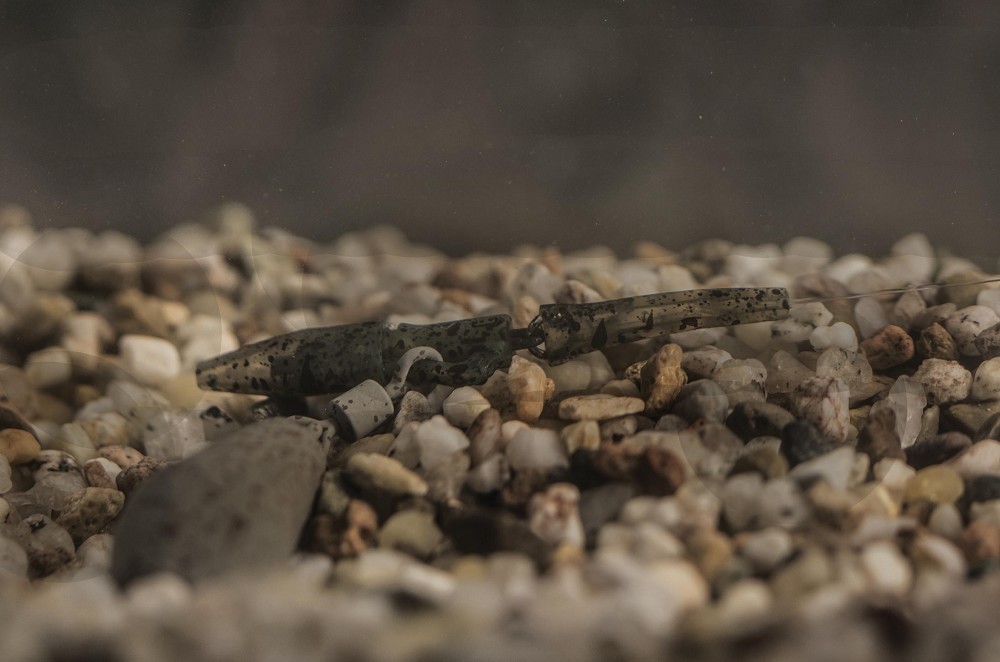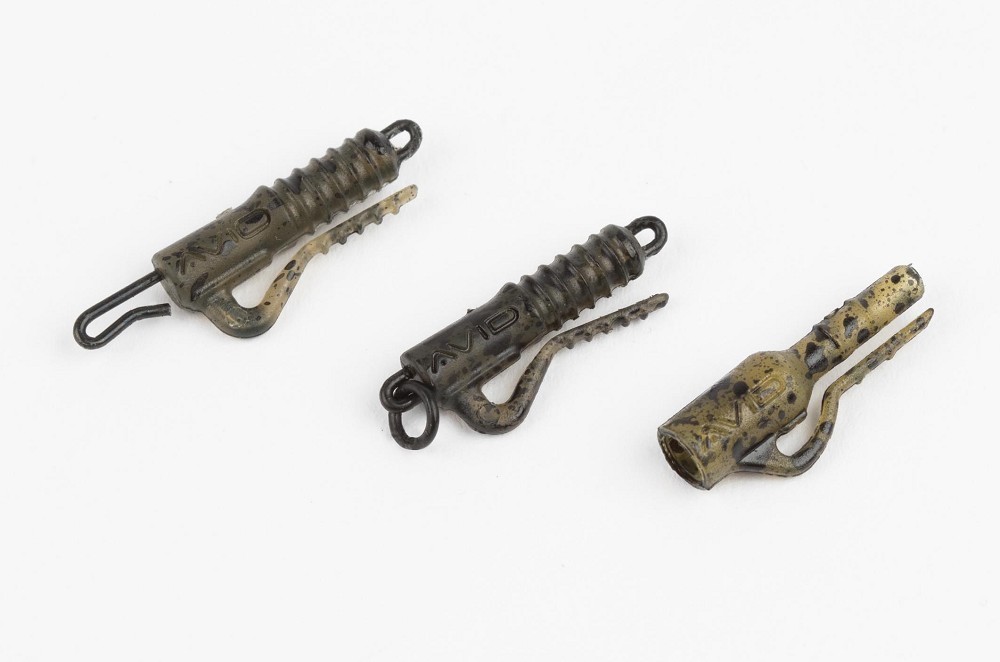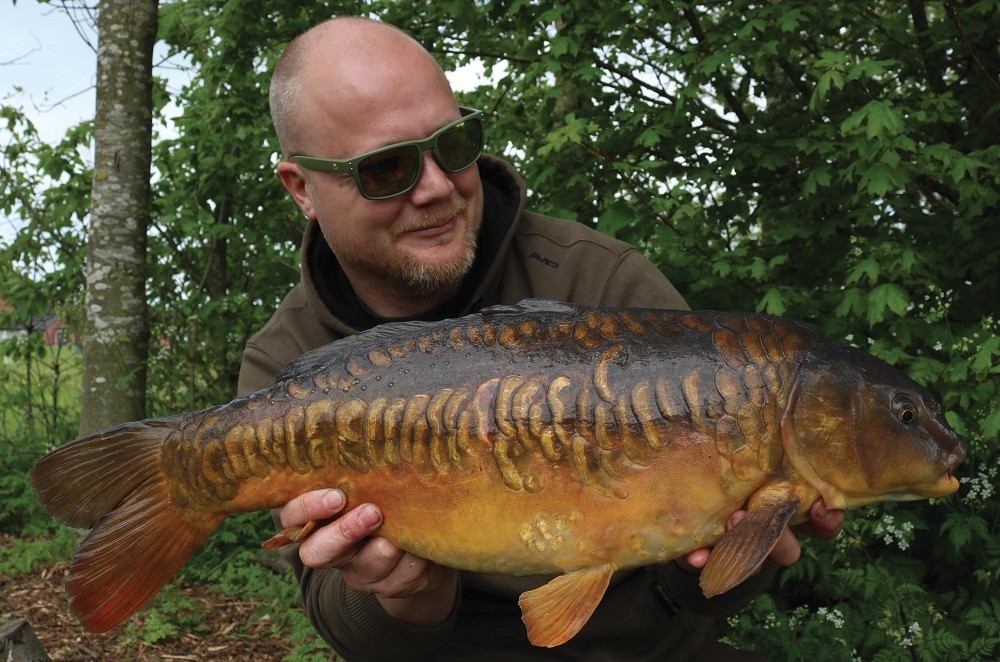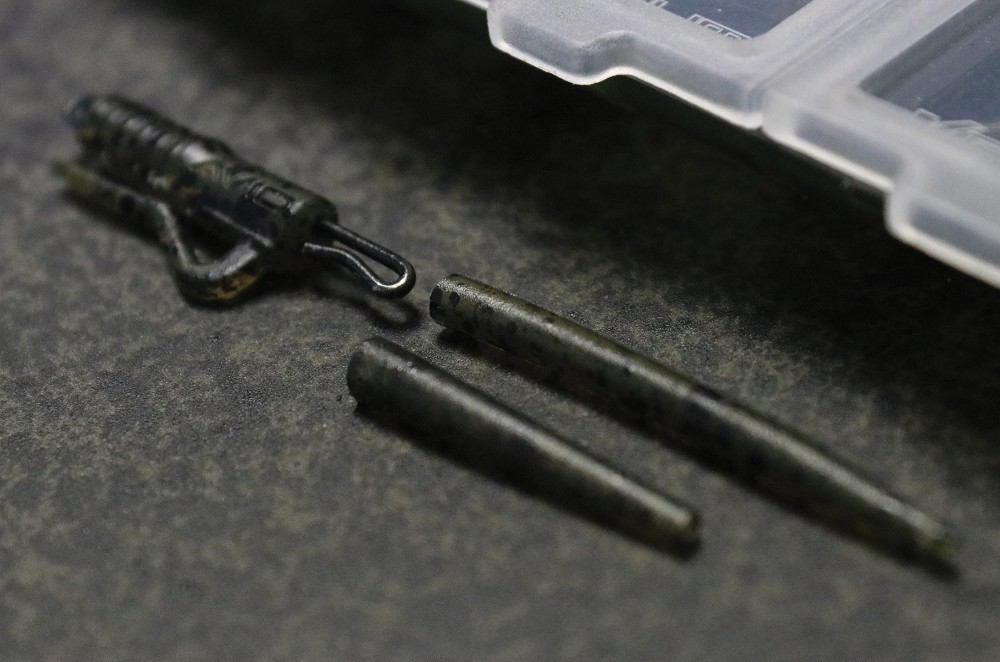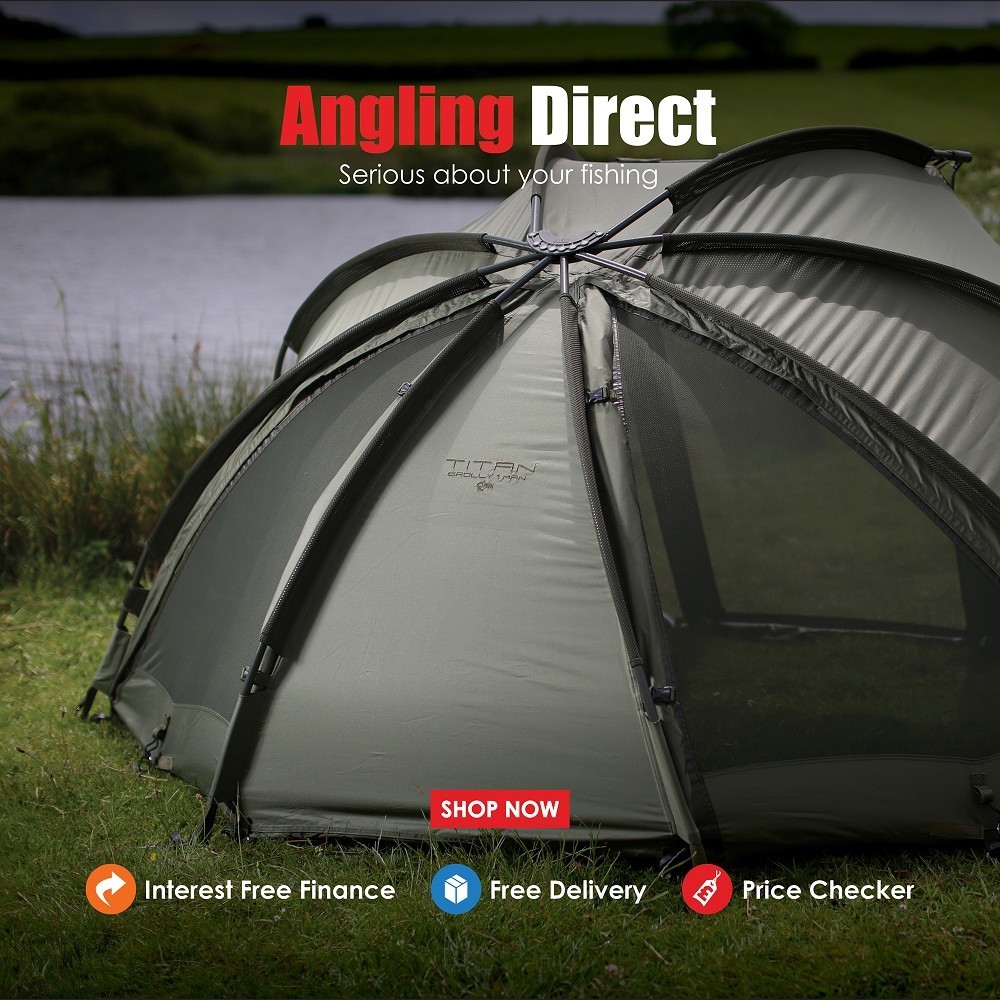
The Pros Secrets: The humble lead clip
Everyone uses a lead clip, right? It’s just about the most versatile item of end tackle around and is subsequently one of the most popular.
Everyone uses a lead clip, right? Since they first arrived on the market, most carp anglers will have enjoyed their benefits. As far as convenience goes, it doesn’t get much better. You can switch lead sizes, take your leads off for transportation and fix any swivel you like inside. You can adjust the tail rubber to your desired level of grip and you can pick from any multitude of colours, shapes and designs. It’s just about the most versatile item of end tackle around and is subsequently one of the most popular.
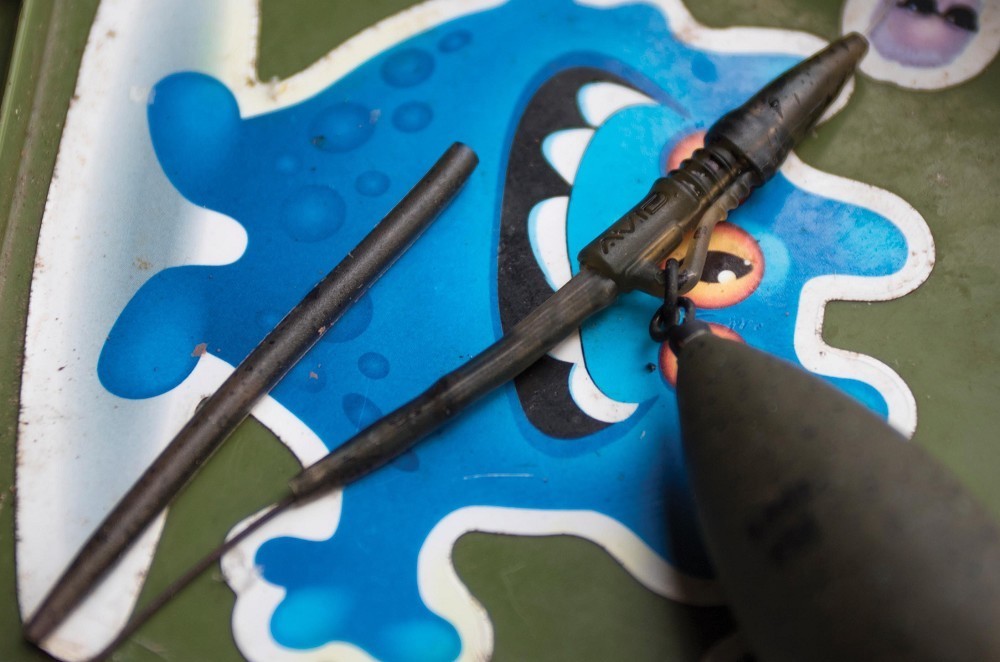 For most of my fishing, the use of an anti-tangle sleeve is key to reducing mid-air tangles. I alter the length depending on the rig length.
For most of my fishing, the use of an anti-tangle sleeve is key to reducing mid-air tangles. I alter the length depending on the rig length.Angling situation
But here’s the thing: are they working for you, or against you? Like most of the articles I write for CARPology, I’m playing Devil’s Advocate and offering my thoughts on the theme. I’m not the kind of guy to say ‘this is the right way’ and that you should follow, but when it comes to these technical aspects, I believe it’s right to analyse what you’re trying to achieve and then tweaking it to suit the carp you’re fishing for.
I’ll give you an example. A few years ago I was stalking in a quiet corner of Baden Hall’s Glovers Pool. There are a few little sloping sandy spots that you can get them to dip down onto if they’re in the mood and you approach with caution. The lakebed can be softer than it looks in places here, as I found out after under-arming out my usual set-up: a QC Lead Clip, Naked Tailrubber and a long anti-tangle sleeve – gently onto the spot. Although the lead entered with minimum force, it sank into the ether, and the anti-tangle sleeve was sticking up like a crane!
Upon tightening the line to sink the leader, this rectified itself, but only because of the generous amount of play in the swivel attached to the lead. The lead turned around as I tightened up to it, leaving everything landing nicely in a line. At distance, however, I doubt this would have happened!
All I did was swap the anti-tangle sleeve for a short piece of the sleeve, just enough to close the gate on the QC part of the metalwork. As all my rigs have a loop tied in the end, the loop was now free to hinge and fall in a neater way. I lowered in my rig again, and all was well. No need to excessively adjust the set-up after it landed, no need to turn the lead around.
Without tackling down and changing everything, all I needed to do was alter the sleeve. That suits my fishing and fits with the convenience factor of a lead clip, right?
Below The Surface
That scenario got me thinking. How many times have I been fishing ineffectively, all because I’ve got stuck in my ways using the same set-up all the time? When I participated in the CARPology Below The Surface feature with Rob Hughes, it felt like I was sitting an exam. The temptation was to stack the odds in my favour, fish a nice close-in spot that I knew was clean and use a set-up that was virtually guaranteed to be sitting perfectly. But I resisted that, one because there were carp to be caught (I caught two for the cameras) and two, I’d been doing really well using what I was using and wanted to know if it could be tweaked for the better.
That feature took my fishing to another level, because I started to make changes to get around some of the things Rob found. I stuck with my reasonably short German Rigs, wafter or bottom bait hookbait, anti-tangle sleeve and lead clip. Only at this time in my fishing, I was still using a 45lb leader, and a standard tail rubber. No PVA bag to help with tangles or anything like that, just the rig. What was heartening was that on every cast, the rig sat in C shape or S shape on the lakebed, away from the lead. The lead clip and tail rubber were sitting to the lakebed as you’d like. But because I was fishing at 110yds in a massive crosswind, the 45lb leader material was sitting up off the bottom like a giant arrow that said ‘danger ahead’. Despite that, I did catch a couple, but I couldn’t help but wonder what might have been.
Straight away I ditched the leader material in favour of fluorocarbon. On my own checks, I realised that the Naked Tailrubbers, which are longer and more tapered, offered a lot of benefits during the rig’s flight. Especially if, like me, you aren’t adding PVA to your set-up.
I found that in the situations where the lakebed was soft and I was removing the longer anti-tangle sleeve in exchange for a smaller sleeve, leaving the rig loop to provide the boom effect, that using a standard tail rubber created tangles. Quite why it happens I don’t know, but it did.
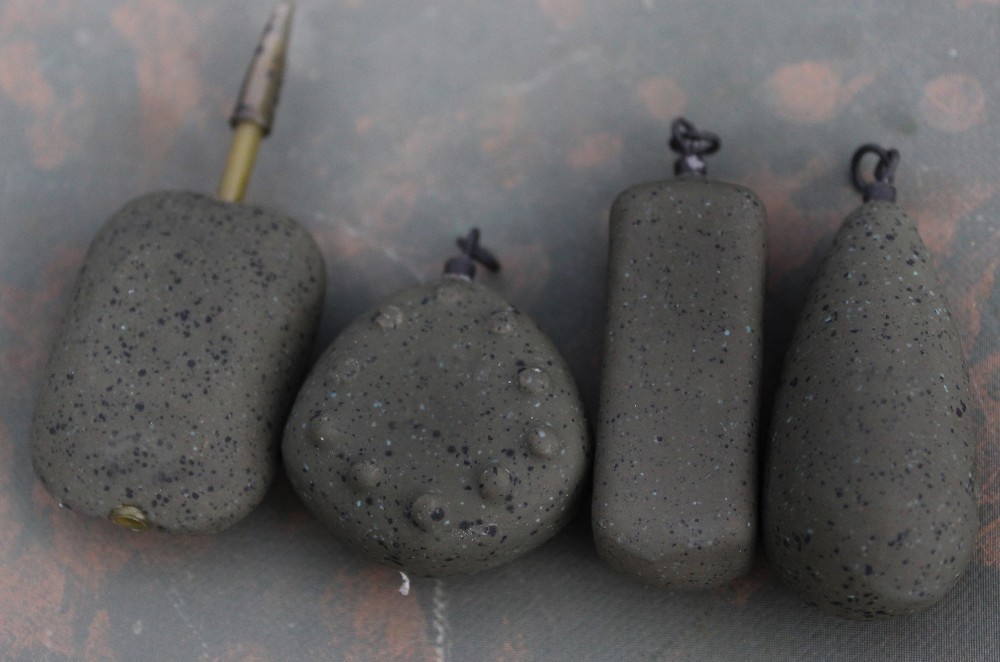 A lead where the swivel is embedded inside the body reduces tangles massively and increases the bolt effect
A lead where the swivel is embedded inside the body reduces tangles massively and increases the bolt effectLose the swivel
Another thing I started to play around with was leads that didn’t have a brass loop and a swivel. At Avid, they had some leads made with a Double Barrel Ring Swivel moulded inside the lead, and this basically reduced any chance of a tangle to zero. What’s more, it improved how rigs laid on the lakebed no matter what range was being fished, because there was never that hinge – that play that can cause tangles through the air, through the descent to the lakebed, or upon landing.
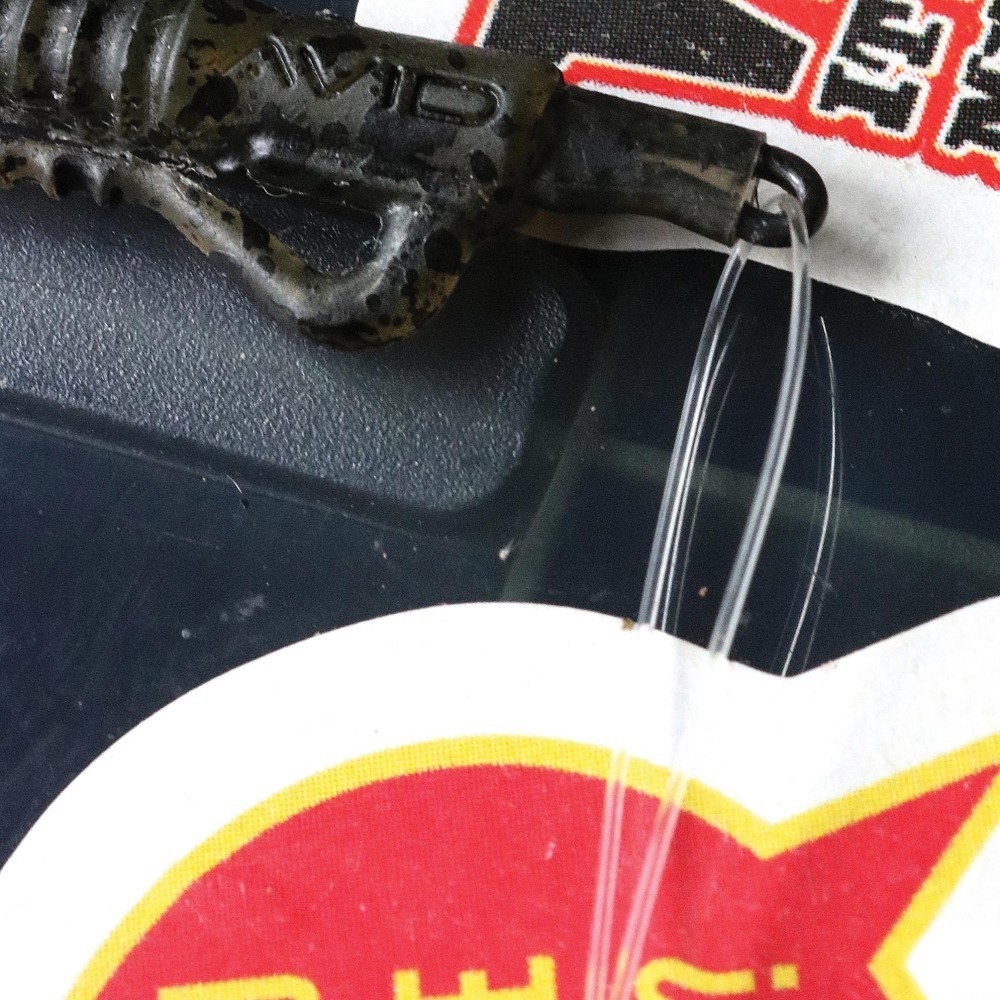 With stiffer hooklinks, I’ve taken to using a loop with a small piece of rubber to trap it on a QC clip. Works a treat!
With stiffer hooklinks, I’ve taken to using a loop with a small piece of rubber to trap it on a QC clip. Works a treat!Tail rubbers
The wonderful thing about lead clips is the variety available, but using one manufacturer’s tail rubber with another’s lead clip can give you difficulties. I’m speaking for the industry here when I say that most of the proper ‘big’ companies test the snot out of this kind of thing before it gets to market and at Avid that’s been no different with their new range of end tackle.
The safety aspect
The key with all lead clip arrangements is the safety aspect. If you aren’t using one so you can eject the lead when it comes into contact with snags, weed or other obstructions, why use one at all? I also believe that a lead clip that isn’t somehow fixed to the metalwork inside it isn’t something that should be used when there’s a lot of weed around. For me, the ‘stem’ or ‘hybrid’ style clips are the ultimate in safety, moulding the metalwork inside the plastic. What’s more, it’s about as convenient as it gets, should you want to change things.
That’s the last of this series about lead set-ups. I think I’ve covered just about everything imaginable – certainly I’ve covered everything I’ve ever tried in my own fishing. I hope you’ve found it interesting and it’s given you some ideas on how to gain an edge on your venues. For me, it’s time to concentrate on catching some big carp! Now pass us a lead clip…





